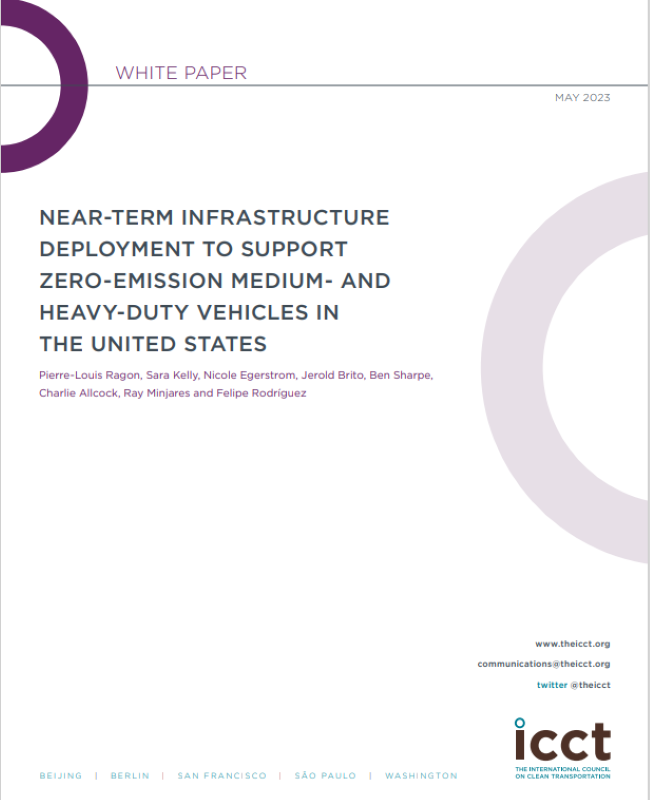Near-Term Infrastructure Deployment to Support Zero-Emission Medium- and Heavy-Duty Vehicles in the United States
Dipo Fadeyi2023-07-05T16:52:12-04:00The electrification of medium- and heavy-duty vehicles (MHDVs) is gaining momentum in the United States, and the major manufacturers in the country have made ambitious commitments for the mass production of zero-emission vehicles (ZEVs) as early as 2030. State-level regulations such as California’s Advanced Clean Trucks (ACT) rule, federal incentives in the Inflation Reduction Act, and the U.S. commitment to join the Global Commercial Drive to Zero (aimed at 100% ZEV sales by 2040) are increasing ZEV adoption in the MHDV sector. Electrifying transportation nationwide will require the deployment of charging (for battery electric vehicles) and refueling (for hydrogen vehicles) infrastructure, as well as the supporting electrical grid infrastructure. MHDV fleet operators, electric utilities, and policymakers alike are uncertain as to where, how much, and by what year charging and refueling infrastructure needs to be built, and what upgrades to grid infrastructure are required to enable this deployment.
